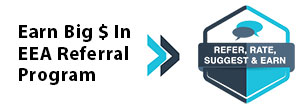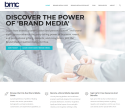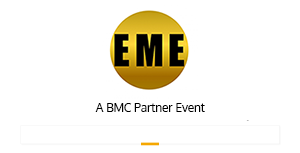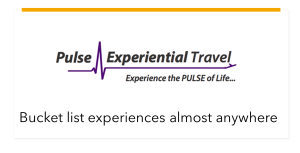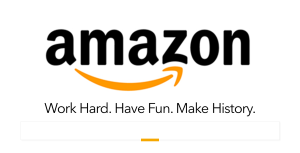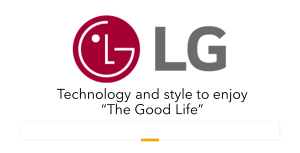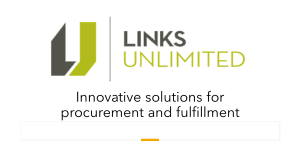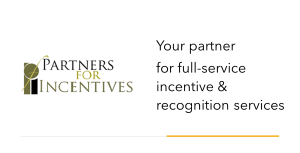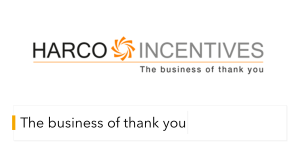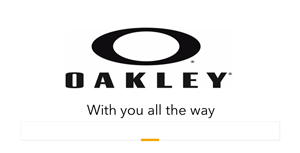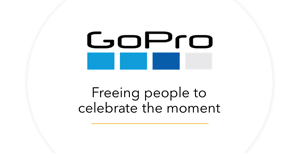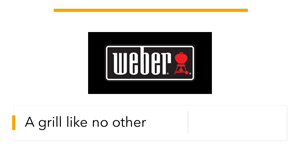Viewpoint: Recognition—It’s Time to Demonstrate the ROI
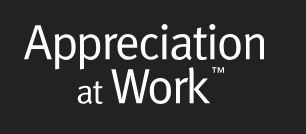 Peer-to-peer recognition and now online gifting programs have become quite the rage in the past few years. Unfortunately, they are not the panacea for a positive workplace culture they are often purported to be, but rather the latest in a series of approaches that clearly have had little impact on overall employee engagement. Here’s what history suggests is the best approach for the use of recognition for those organizations seeking sustainable value from their programs.
Peer-to-peer recognition and now online gifting programs have become quite the rage in the past few years. Unfortunately, they are not the panacea for a positive workplace culture they are often purported to be, but rather the latest in a series of approaches that clearly have had little impact on overall employee engagement. Here’s what history suggests is the best approach for the use of recognition for those organizations seeking sustainable value from their programs.By Dr. Paul White
.jpeg)
A Brief History of Recognition
Attempts at Research
The Power of Measurement
Peer-to-peer recognition and gifting platforms are the latest in a series of fads over the last four decades that demonstrate the opportunity for human resources organizations to make a better case for the value of employee recognition. The human resources field moves from fad to fad because whatever it’s doing often doesn’t work: employee engagement and customer engagement remain low according to surveys from Gallup and the American Customer Satisfaction Association. Without a strategic approach with clear metrics systematically embedded into the way the organization conducts itself, these programs mostly check off another box that not only creates little value but often contributes to workplace cynicism.
The problem is not with the recognition industry or even the human resources or other managers that purchase these programs. It is with the senior management who continue to assume that these types of programs or the cost of low employee and customer engagement really can’t be measured and accept it as a cost of doing business. The increasing access to customer and employee engagement data and the impact on sales, productivity, and quality are getting easier to measure, providing a competitive edge to those who do act accordingly.
A Brief History of Recognition
The recognition industry goes back to at least the 19th century, when companies began using time pieces, writing instruments, plaques, trophies, and other commemorative items to recognize employees for tenure, attendance, retirement, or for sales achievements. Most of the suppliers to the industry were manufacturers of these items sold directly to the companies or through the promotional distributors serving them.
These practices became more sophisticated in the 1980s and 1990s when incentive and recognition companies evolved out of traditional commemorative jewelry or award catalogs to focus on a broader definition of recognition. Some of these programs became more sophisticated in terms of implementation and measurement during the rise of total quality management in the 1990s, when companies began to apply disciplined processes and metrics to employee motivation, especially in manufacturing facilities. During the same time, the dot-com boon of the 1990s saw a burst of technology players seeking to automate recognition in the service sector, but most went away when funding dried up in the dot-com bust. In the meantime, the length of service, attendance, and safety-based recognition industry continued, dominated by a few large recognition and incentive companies at the high end, and by several dozen recognition companies supported by about 1,000 or so promotional distributors serving the broader market.
In the 2000s, technology quickly came back into the picture both from traditional incentive and recognition companies and new players, some funded by private equity and venture capital with major expectations of scale. At around this time, more people began to use the term employee engagement. Despite the advent of technology and the new terminology, little evidence suggests that any such scale ever occurred, despite a succession of innovations in terms of social walls, different types of recognition awards, peer-to-peer recognition systems, and lately, it appears, a focus on reward experiences.
In the meantime, somewhere along the way, probably because employee engagement did not improve, some suppliers began talking about ‘employee experience” as if that were the panacea. Experience apparently refers to the conditions in which employees work and what we do to enrich it, with the assumption that a focus on experience will yield a higher level of engagement. Meanwhile, none of this seems to have addressed the Great Resignation, or phenomenon of quiet quitting, the hidden costs of which are simply included in the financial assumptions at most companies.
Attempts at Research
This is not to say that along the way the recognition field has not tried to demonstrate its value, but it’s almost always with numbers related to usage of the technology, employee engagement scores, not more concrete scores such as referrals, ratings, and reviews, let alone turnover, human capital return on investment or human capital value add.
As a company that came to the field of recognition with a different approach focused on a systematic approach to appreciation that any size organization can apply, it became clear that the only programs that sustain are those that utilize an essential mechanism for encouraging people. Because the Appreciation at Work system does not require CEO approval or any technology, requires a minimal budget, with only a personal assessment survey, a book and a short online training course enabling facilitators to become trained, it is easy to implement and to maintain.
From our experience, we have learned that to create value and endure, the system of appreciation must become an essential part of the way people feel encouraged to collaborate, innovate, and give it their all when needed. It’s an authentic grass-roots system that is a direct reflection of the people who enable it within their groups. Without that energy, the system dies, with consequences that often still escape the CFO’s or CEO’s scrutiny.
The Power of Measurement
This same phenomenon exists at most organizations, with far greater stakes. Human capital analytics and customer relationship management technologies, and now the growing need to disclose very detailed information on stakeholder management practices under the new European Union Corporate Sustainability Reporting Directive affecting at least 3,000 of the largest US companies, will increasingly expose the cost of the waste long estimated by Gallup to have a multi-trillion-dollar impact on businesses worldwide.
There are multiple and simple ways to measure the return on investment of recognition programs beyond employee engagement scores, some of which companies will need to disclose because of the new law. These include employee turnover, health, and safety. Others include employee and customer referrals, reviews, and suggestions, or human capital return on investment and human capital value add, simple arithmetic calculations that help indicate the efficiency of investments in people.
The measures selected depend on the purpose, goals and objectives of the organization and the program, and can include both quantitative and qualitative measures, especially when these can be correlated.
As human resources departments increasingly tackle sharper questions from management, it is inevitable that more organizations will look for ideas from their solution providers. We will need to rise above the traditional employee engagement metrics to truly understand how expressing appreciation as a way of business helps advance the organization’s purpose, goals, and objectives.
For More Information
Paul White, Ph.D.
President, Appreciation at Work
316-681-4431
paul@drpaulwhite.com
RRN: Your Partner in Success in Incentives, Rewards, and Recognition
Published by the Enterprise Engagement Alliance at TheEEA.org- The only weekly news, how-to and resource publication of record for the Incentive, Rewards, and Recognition field.
- The only marketing agency focusing specifically on the IRR and broader engagement marketplace.
The Industry’s Only Combined Media Platform and Marketing Agency to Help You Expand Your Business
- All the industry news, research, announcements, and how-to articles read by over 20,000 end-users in sales, marketing, and human resources; incentive, recognition, loyalty and promotional companies, as well as marketing and human resources agencies, seeking to enhance performance through effectively designed incentive programs.
- Unparalleled business development services for engagement, incentive and incentive travel, recognition firms; brands, gift cards and master fulfillment companies, and technology firms, featuring ROI-based business development strategy design and ongoing digital and social media and e-newsletter communications to help marketers profit in the coming era of cookie-less marketing.
- Unique abilities for solution providers to sponsor authoritative, evergreen content directly related to what they sell through the EEA’s Effective Practices series on articles in our media platforms.
- EEA YouTube Channel with over three dozen how-to and insight videos and growing with nearly 100 expert guests.
- Access to new technologies from EEA preferred solution providers enabling brands to create their own points-based or transactional redemption site.
- Unparalleled expertise in program design, return on investment measurement, reporting, and prescriptive analytics.
Outreach to Enhance Industry Awareness
The EEA is dedicated to helping address the fact that the IRR business remains a little-known industry.
- The Association of National Advertisers education effort reaches the CMOs of almost every leading brand to promote our industry and the importance of program design through created for their members.
- The Brand Media Coalition has led the way in helping brands better tell their stories for use in incentive, recognition, and loyalty programs, and to actively promote the importance of the reward experience and buying through industry channels.
- The Enterprise Engagement Alliance is assisting companies with the upcoming Corporate Sustainability Reporting Directive, which includes details on the practices and metrics involved with employee and customer engagement.
Promoting Effective Program Design
- The EEA provides comprehensive and growing library of concise, research-based resources to promote serious ROI-based thinking, including the importance of the reward experience.
- Join the Enterprise Engagement Alliance to master the processes of enterprise engagement, stakeholder management and reporting, or contact the EEA to get expert assistance on strategy design, implementation, and reporting.
RRN: Your Partner in Success in Incentives, Rewards, and Recognition
Contact Bruce Bolger at 914-591-7600, ext. 230 or email Bolger@TheEEA.org when you want to get to know or get known in this growing $1.76 billion marketplace.


